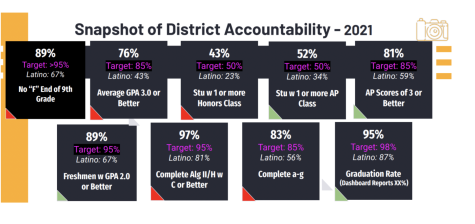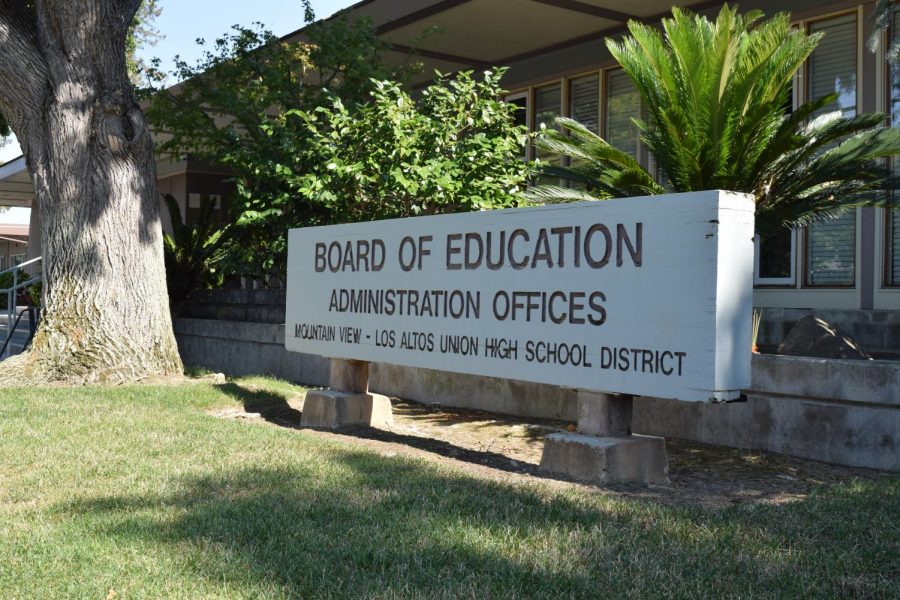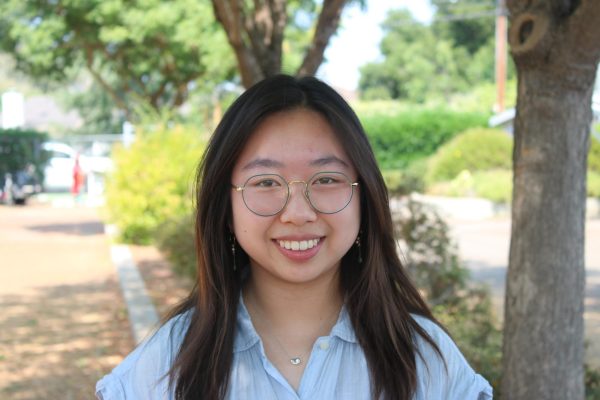District works to solve disparities revealed in the annual review of data
After meeting for the annual review of data, the Mountain View–Los Altos Board of Education clarified its general intervention plan to pursue equity in the District. This included addressing the uneven number of Latino students in special education.
Every year, the Mountain View–Los Altos Board of Education meets for a review of school data, a report containing information on student performance within the District. The Board met last November to discuss key issues brought up in the report for last school year, and how to best pursue equity in the District.
Key Issues
The District has a significantly disproportionate number of Latino students in special education programs, meaning that Latino students have been the most overrepresented demographic in the program for at least three years in a row.
Since the 2017–2018 school year, Latino students in special education decreased from 72 percent to 65 percent last year. Los Altos High School has a 28 percent Latino population while Mountain View High School has 23 percent. While the 7 percent decrease is an improvement, the District still has work to do. In contrast, only 26 percent of special education students are white and 4 percent are Asian.
The District attributes the problem to three root causes — a lack of academic support, implicit biases and cultural dissonance and poor relationships with Latino families. The Board conducted anonymous surveys to receive parent and student feedback.
“We are always working,” an anonymous Latino parent wrote. “Just because we don’t attend a school meeting, doesn’t mean we do not care.”
The report also identified disparities in the assistance that Latino students receive. For example, struggling Latino students are more likely to be transferred to Alta Vista High School instead of being recommended to Middle College or College Now. All three programs are alternatives to the traditional high school path—but Alta Vista is a continuation high school for students who are unlikely to graduate on time whereas Middle College and College Now are both programs that students choose to apply to and allows the student to take college courses.
The report shows that over 60 percent of Alta Vista students identify as Latino, and reflects the frustrations of Latino students at the lack of support in the District.
“Instead of offering to help, teachers wait to be asked for help,” an anonymous Latino student wrote. “They don’t say, ‘Do you need help, let me show you.’”
Other concerns found in the report include disproportionately harsh disciplinary actions against Latino students, a lack of education about available support such as the Tutorial Center and AVID courses and a lack of emphasis on mental health within the District.
In the classroom, many of the survey respondents reported a lack of connection with their teachers and counselors. The respondents commonly recognized implicit biases in their interactions with teachers and counselors, and called for more engagement with their community.
“It feels like these people think [we will] not succeed,” an anonymous Latino student wrote. “It begins in the classroom. The teacher says, ‘pair up.’ A white kid is not going to pick you, a brown kid. It starts in the class, where you feel belittled. It is about the way you are taught. Inclusive but intimidating.”
Indicators:
To work toward equitability, the District has identified nine target indicators. These indicators represent the District’s current achievements and progress toward its target goals.
Each indicator shows a different metric of how the school can measure its advancements. This year, the District met or exceeded nearly all of its target indicators, including the percentage of students with an average grade point average of 3.0 or higher and the number of students with one or more Advanced Placement classes.
While this success is encouraging, teachers and administrators alike recognize that there is a long way to go.
“I think there’s definitely more of an awareness that things need to change,” English and AVID teacher Keren Dawson-Bowman said. “There are some pockets on campus where people are doing some really cool experimenting. A lot of this is experimentation.”

Solutions:
The District has taken steps to implement a Coordinated Comprehensive Early Intervention Services (CCEIS) process, which is an intervention plan that focuses on addressing root causes.
The report details the District’s plan to decrease all Algebra Two class sizes to 25 students. Previously, other freshman classes such as Algebra I and Geometry have seen grade improvements with decreases in student-teacher ratio.
“[We] understand that freshmen are new, they need additional support,” Associate Superintendent Teri Faught said. “We want to give them a real, strong support system to build from for the next three years.”
The CCEIS process also aims to stop the over-identification of Latino students for special education.
“Many of our high schools across the Bay Area are in the same situation,” Faught said. “We’re all partnering together, hearing about best practices and really learning what we can do to bring in better support to help our students feel engaged and feel respected and feel connected.”
This includes building better connections with partner middle schools so that the transition from middle to high school is smoother. Teachers are also working toward the implementation of more equitable grading scales and literacy support.
The District has also attempted to reform its connection with non-English-speaking parents, increasing the number of Spanish speakers in the District’s front offices and offering near-instantaneous online translation.
“[Our goal is] to make sure that those families that come in feel supported,” Faught said. “That we have a system that’s in place and we’re smiling and we’re supporting and ensur[ing] that they’re going to come back.”
Lastly, the District has recognized that in order to pursue equity, changes must be made in the classroom as well. By implementing teacher training programs on equity, classrooms will be improved so that they can fit the needs of all students.
“We have a big emphasis on professional development because we recognize teaching is a changing business,” MVLA Board of Trustees clerk Phil Faillace said.
However, for many teachers, making changes is the hard part.
“I think it’s where the rubber meets the road, actually changing things and doing, that’s where it gets hard,” Dawson-Bowman said.
The MVLA Board of Education will meet again after the conclusion of the 2021–2022 school year, to discuss what worked and what needs to change, as Los Altos High School continues to work toward equity.
“Our work is a journey, not a destination,” Faught said. “We’re never done, there’s always more work to do.”





